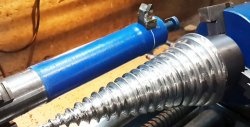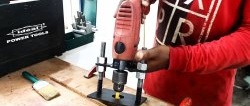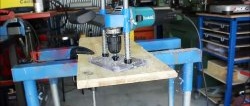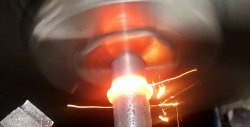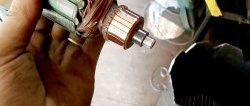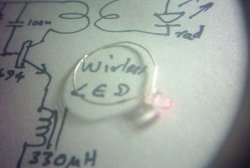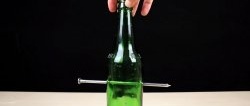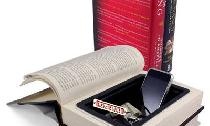How to make a cube within a cube on a lathe
A cube in which another cube within a cube is freely located is amazing. And when people find out that it was made on a lathe, they fall into a trance. Do you want to have such a thing to amaze your loved ones with it and make them happy with a wonderful souvenir? Worth a try.

To make such a product, you need skills on a lathe and the following materials:
We make a cube in a cube on a lathe with the following tools: drills (spiral drills of various diameters and centering), cutters (through, boring for blind holes, grooving) and calipers.

Blank - a metal cylinder can be of any diameter (D), but not of any length (L). These quantities are related by the formula:

It is not difficult to guess that the edges of the outer cube will be equal to 35 mm.
If we have chosen a workpiece with a diameter of 50 mm, then we must cut a cylinder 35 mm long, at the two ends of which two faces of the cube will be located. We still have four more to sharpen.
We clamp the cylinder in the machine chuck so that one end of it lies on the cam. When forming the remaining four faces, each time we will have to remove metal with a thickness of (50 - 35)/2 = 7.5 mm.

Taking into account the non-standard fastening of the workpiece, to reduce the cutting force, we remove the metal in several passes. By repeating the same operation four times, we get a cube of 35×35×35 mm.

Next, we use a split bushing with a collar and an internal diameter of 35 mm. We insert the cube into it and clamp the resulting assembly in the chuck of the lathe.

First, we use a centering drill to countersink a hole for a drill with a diameter of 5 mm, with which we make a blind hole to a depth of 18-20 mm.

We bore the resulting drilling with a boring cutter for blind holes. The boring shape is stepped: from the end with a diameter of 25 mm to a depth of 6.5 mm, then with a diameter of 14 mm and a depth of 5 mm.



At the end of each step, we use a groove cutter to make an annular groove of the required diameter. To do this, bring the tip of the cutter to the bottom of the step, then move the cutter to the diameter and set the feed along the dial.


We repeat these operations for the next four faces of the cube.



The approach to the sixth face will be different, because at this point the inner cube is held by only one corner and if it is processed like the others, it will break off, break the cutter and damage itself.
To strengthen the inner cube, fill all the cavities with hot glue using a special gun. To prevent the glue from leaking out before it hardens, we use paper napkins to cover the holes.

To quickly harden the glue, lower the cube, wrapped in napkins, into cold water.

As soon as the glue sets, we remove the napkins, and fix the cube in the lathe chuck using a split sleeve.
We carry out all the operations as for the other faces of the cube, but very carefully and without large feeds, so that less heat is generated and the glue does not melt.
We lower the cube with the set glue into hot water, where it heats up and melts slightly. Without delay, remove the glue “plugs” with a suitable tool, for example, a screwdriver.

The second and third cubes are released and, after cleaning and polishing, the puzzle souvenir takes on its final form.




Will need
To make such a product, you need skills on a lathe and the following materials:
- metal cylinder;
- split bushing with outer collar;
- flat screwdriver;
- silicate glue;
- paper napkins;
- container with cold and hot water.
We make a cube in a cube on a lathe with the following tools: drills (spiral drills of various diameters and centering), cutters (through, boring for blind holes, grooving) and calipers.
The process of making a cube in a cube

Blank - a metal cylinder can be of any diameter (D), but not of any length (L). These quantities are related by the formula:

It is not difficult to guess that the edges of the outer cube will be equal to 35 mm.
If we have chosen a workpiece with a diameter of 50 mm, then we must cut a cylinder 35 mm long, at the two ends of which two faces of the cube will be located. We still have four more to sharpen.
We clamp the cylinder in the machine chuck so that one end of it lies on the cam. When forming the remaining four faces, each time we will have to remove metal with a thickness of (50 - 35)/2 = 7.5 mm.

Taking into account the non-standard fastening of the workpiece, to reduce the cutting force, we remove the metal in several passes. By repeating the same operation four times, we get a cube of 35×35×35 mm.

Next, we use a split bushing with a collar and an internal diameter of 35 mm. We insert the cube into it and clamp the resulting assembly in the chuck of the lathe.

First, we use a centering drill to countersink a hole for a drill with a diameter of 5 mm, with which we make a blind hole to a depth of 18-20 mm.

We bore the resulting drilling with a boring cutter for blind holes. The boring shape is stepped: from the end with a diameter of 25 mm to a depth of 6.5 mm, then with a diameter of 14 mm and a depth of 5 mm.



At the end of each step, we use a groove cutter to make an annular groove of the required diameter. To do this, bring the tip of the cutter to the bottom of the step, then move the cutter to the diameter and set the feed along the dial.


We repeat these operations for the next four faces of the cube.



The approach to the sixth face will be different, because at this point the inner cube is held by only one corner and if it is processed like the others, it will break off, break the cutter and damage itself.
To strengthen the inner cube, fill all the cavities with hot glue using a special gun. To prevent the glue from leaking out before it hardens, we use paper napkins to cover the holes.

To quickly harden the glue, lower the cube, wrapped in napkins, into cold water.

As soon as the glue sets, we remove the napkins, and fix the cube in the lathe chuck using a split sleeve.
We carry out all the operations as for the other faces of the cube, but very carefully and without large feeds, so that less heat is generated and the glue does not melt.
We lower the cube with the set glue into hot water, where it heats up and melts slightly. Without delay, remove the glue “plugs” with a suitable tool, for example, a screwdriver.

The second and third cubes are released and, after cleaning and polishing, the puzzle souvenir takes on its final form.



Watch the video
Similar master classes
Particularly interesting
Comments (2)


